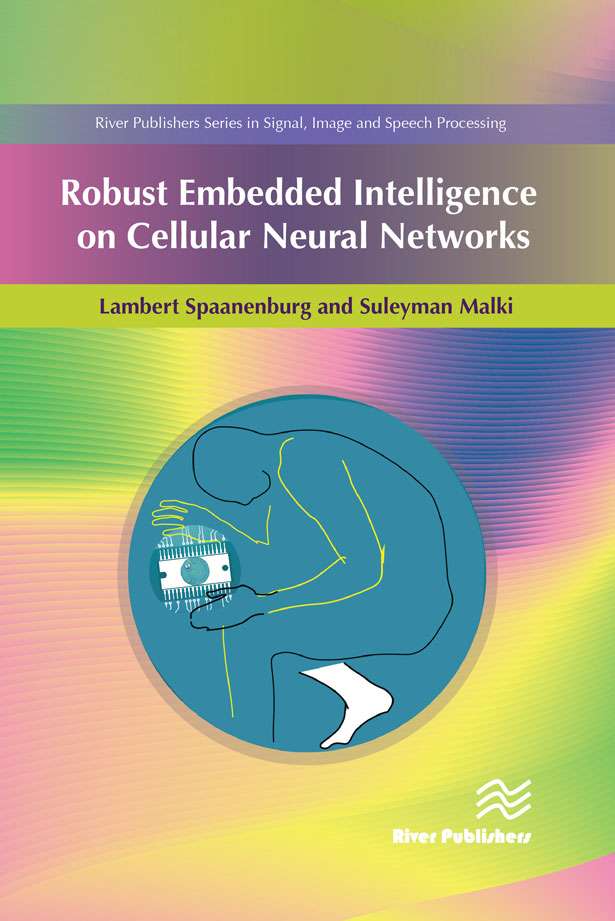River Publishers Series in Signal, Image and Speech Processing
Robust Embedded Intelligence on Cellular Neural Networks
Authors:
Lambert Spaanenburg, Comoray AB, Sweden and Lund University, Sweden
Suleyman Malki, Comoray AB, Sweden
ISBN: 9788770221009 e-ISBN: 9788770220996
Machine Intelligence (MI) is the motor that drives the modern information-rich society. Supercomputing and parallel coding have made MI programs feasible and the theoretical base of MI has matured. Graphical Processors (GPs) have found new life as carrier for low-cost supercomputing. The road towards lower cost & size leads to embedding systems, such as self-driving cars and intelligent houses.
Machine intelligence has not only opened many disruptive venues but given simultaneously a lot of anxiety. Compared to the many accidents in the early days of automotive traffic, the few problems with the TESLA cars are already sufficient for major concern. Evidently, still research is required to bring MI on the appropriate safety levels that rule the type tests for acceptance on the European automotive market.
In the ACM Turing Award 2018, Hennessey and Patterson prophesize the breakthrough of Domain-Specific Processor. A typical example is the modern vision hardware in the automotive domain. Such applications bring collectively self-driving in reach for safety concerns. It features a domain-specific mix of hardware and software. Hardware can be correctly designed & manufactured and will not change afterwards. Software can be formally proven but efficiency requires to keep it close to the platform.
Robust Embedded Intelligence on Cellular Neural Networks makes the reader familiar with the mathematical and electronic techniques to turn a data-driven problem into a safe embedded solution. In particular, it treats aspects on Cellular Neural Networks (CNN) for reliable visual recognition in a wide range of practical applications, highlighting vein feature extraction and license plate recognition.
Machine intelligence has not only opened many disruptive venues but given simultaneously a lot of anxiety. Compared to the many accidents in the early days of automotive traffic, the few problems with the TESLA cars are already sufficient for major concern. Evidently, still research is required to bring MI on the appropriate safety levels that rule the type tests for acceptance on the European automotive market.
In the ACM Turing Award 2018, Hennessey and Patterson prophesize the breakthrough of Domain-Specific Processor. A typical example is the modern vision hardware in the automotive domain. Such applications bring collectively self-driving in reach for safety concerns. It features a domain-specific mix of hardware and software. Hardware can be correctly designed & manufactured and will not change afterwards. Software can be formally proven but efficiency requires to keep it close to the platform.
Robust Embedded Intelligence on Cellular Neural Networks makes the reader familiar with the mathematical and electronic techniques to turn a data-driven problem into a safe embedded solution. In particular, it treats aspects on Cellular Neural Networks (CNN) for reliable visual recognition in a wide range of practical applications, highlighting vein feature extraction and license plate recognition.
Cellular Neural Networks, Embedded Intelligence, Robust Design, Morphological Functions, FPGAs, Memory Design, Embedded Systems, System Design, Vein Feature Extractions
